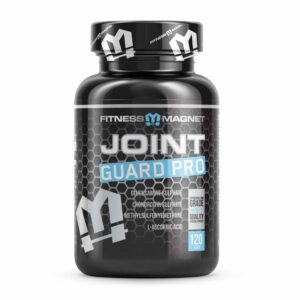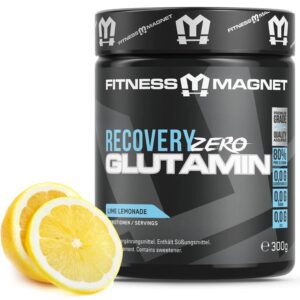Ganz egal, ob du Anfänger oder Fortgeschrittener bist, irgendwann kommst du in jedem Fall an den Punkt, an dem sich dein Muskelaufbau verlangsamt und du händeringend nach neuen Möglichkeiten suchst, um dennoch weiter an Muskelmasse zuzulegen. An dieser Stelle möchten wir dir deshalb fünf Trainings-Programme für Neueinsteiger und erfahrene Athleten vorstellen, die dir dabei helfen, dein Ziel zu erreichen.
Programm 1 – Starting Strength
Beim Starting Strength Programm, das aus der Feder der US-amerikanischen Fitnesslegende Mark Rippetoe stammt, handelt es sich um ein Trainingskonzept, das sich vorwiegend an Anfänger richtet und sich auf die drei Königsübungen des Kraftsports konzentriert. Im Rahmen der Durchführung kommen also ausschließlich Übungen zur Anwendung, die mit freien Gewichten ausgeführt werden. Im Gegensatz zu vielen anderen Anfänger-Programmen, die oft überwiegend durch den Einsatz von Maschinen geprägt sind, wird dem Athleten also gleich zu Beginn seiner Trainingskarriere die Wichtigkeit des Trainings mit freien Gewichten nähergebracht. Darüber hinaus wird in diesem Kontext bereits früh das Prinzip des Progressive Overloads praktiziert, das für den kontinuierlichen Muskelaufbau unabdingbar ist. Aufgrund der geringen Übungsauswahl besteht allerdings die Gefahr, dass das Workout schon nach wenigen Wochen eintönig werden kann.
Programm 2 – 5/3/1
Hinter dem 5/3/1-Programm steht niemand Geringeres als Jim Wendler. Grundsätzlich basiert das Programm auf deinem One-Rep-Max, also jenem Trainingsgewicht, dass du im Zuge einer spezifischen Übung ein einziges Mal sauber bewegen kannst. Es ist also kein Wunder, dass in diesem Zusammenhang vor allem schwere Grundübungen wie Kniebeugen, Kreuzheben, Bankdrücken und Military-Presses zur Anwendung kommen, denen jeweils ein Trainingstag gewidmet ist. Während die schweren Grundübungen also nach dem 5/3/1-Prinzip durchgeführt werden, können die weiteren Übungen der jeweiligen Trainingseinheit entsprechend im normalen Wiederholungsbereich abgearbeitet werden, sodass das Trainingsvolumen gewahrt bleibt. Der Trainingszyklus unterteilt sich dabei in drei Wochen, was sich wie folgt in der Praxis widerspiegelt: Während für die schweren Grundübungen in der ersten Woche drei Sätze mit je fünf Wiederholungen eingeplant sind, reduziert sich die Anzahl der Wiederholungen pro Satz in der darauf folgenden Woche auf drei. Im Gegenzug steigt allerdings das Trainingsgewicht, wobei die Gesamtlast nach Möglichkeit gleich bleiben sollte. In der dritten Woche kommt schließlich das namensgebende 5/3/1-Prinzip zum Tragen, sodass im ersten Satz fünf, im zweiten Satz drei und im letzten Satz schließlich noch eine Wiederholung absolviert wird. Wie oft du pro Woche trainierst, bleibt dir überlassen, hängt aber in erster Linie von deiner Regenerationsfähigkeit ab.
Programm 3 – PRRS
Die Abkürzung setzt sich aus den Begriffen Power, Rep Range und Shock zusammen, was im Grunde genommen bereits vorwegnimmt, worum es im Kern geht. Im Detail handelt es sich nämlich um ein Workout-Programm für fortgeschrittene Athleten, das sich aus drei verschiedenen Teil-Workouts zusammensetzt, die jeweils im Wochenrhythmus absolviert werden. Während das Power-Workout vorwiegend aus schweren Grundübungen besteht, kennzeichnet sich das Rep-Range-Workout als klassisches volumenorientiertes Training im Hypertrophiebereich. Im Fall des Shock-Workouts hast du letztlich freie Hand, in welcher Weise du deinen Körper schockst, um den Muskelaufbau zu forcieren. Dementsprechend solltest du dich nicht scheuen, diverse Intensitätstechniken wie Supersätze, Negativwiederholungen oder Rest-Pause-Sätze in dein Training zu integrieren. Der große Vorteil des PRRS-Systems ist nicht nur die Tatsache, dass dir das Training durch die große Abwechslung kaum langweilig werden wird, sondern auch, dass du aufgrund der unterschiedlichen Belastungsreize in puncto Muskelaufbau keine Plateaus fürchten musst. Letzteres gilt selbstredend nur, wenn du das Training gänzlich seriös angehst.
Programm 4 – MAX-OT
Dieses Programm fokussiert sich auf den Faktor Kraft, wohingegen es sich gleichzeitig durch ein vergleichsweise überschaubares Volumen auszeichnet, was sich anhand der Tatsache zeigt, dass pro Muskelgruppe lediglich neun Sätze mit jeweils vier bis sechs Wiederholungen absolviert werden. Jede Trainingseinheit dauert dabei maximal 45 Minuten, was den Vorteil einer möglichst geringen Ausschüttung des katabol wirkenden Stresshormons Cortisol nach sich zieht. Da das System ausschließlich auf komplexe Grundübungen baut, gestaltet sich die Trainingsintensität vergleichsweise hoch. Um dem Organismus dennoch von Zeit zu Zeit ausreichend lange Erholungsphasen zu verschaffen, folgt nach zwölf Trainingswochen jeweils eine Woche Trainingspause, während der dich sowohl Muskulatur als auch Nervensystem regenerieren können. Beachte allerdings, dass du im Zuge der Durchführung mit einem Spotter zusammenarbeiten solltest, um den Muskelaufbau durch größtmögliche Intensität zu optimieren und letztlich auch Verletzungen zu verhindern.
Programm 5 – Smolov
Beim Smolov-Programm handelt es sich nicht um ein ganzheitliches Workout, sondern vielmehr um eine Strategie, mit deren Hilfe du speziell große Muskelgruppen, wie die Brust, deine Beine oder den Rücken attackieren und den Muskelaufbau aufs Neue befeuern kannst. Dementsprechend kannst du dieses System in deinen normalen Trainingsplan integrieren. Angenommen du trainierst viermal pro Woche, baust du beispielsweise in jede Trainingseinheit vier bis fünf Sätze Kniebeugen ein, die jeweils mit 80 Prozent deines One-Rep-Max absolviert werden. Die Erfahrung mit zahlreichen Athleten zeigt, dass es keine Seltenheit ist, dass diese sich binnen eines Monats im Bereich der Maximalkraft um bis zu 25 Kilogramm verbessern. Analog kannst du das Smolov-System natürlich auch mit Übungen wie Kreuzheben oder Bankdrücken praktizieren.

